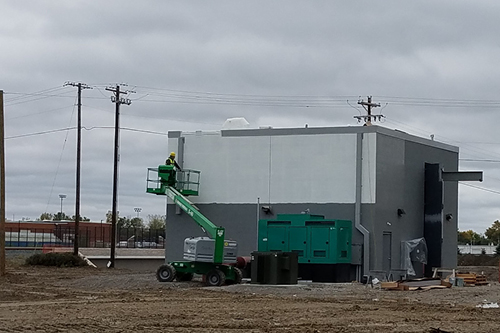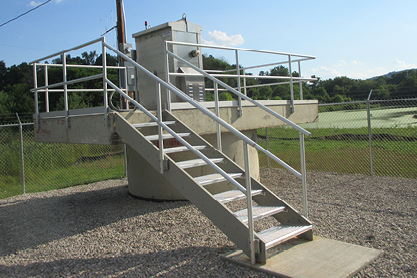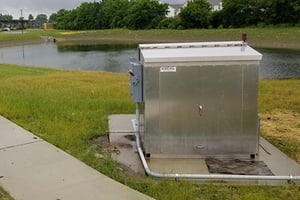 The Impacts of Groundwater & Stormwater on Infrastructure
The Impacts of Groundwater & Stormwater on Infrastructure
In many communities across the United States, groundwater and stormwater are valuable resources that are collected and treated for everyday use, from potable water to greywater reuse applications. Common concerns about the groundwater quality can include microorganisms, nitrates, heavy metals, organic chemicals, radionuclides and fluoride, which affect the water quality and can impact the infrastructure used to convey groundwater to a treatment facility. With stormwater runoff, the concerns and potential contaminants are increased as this can include oily water, salt brine, plastics, nitrogen and phosphorus pollutants which typically finds its way into streams, rivers and lakes. This runoff typically finds its way back to groundwater sources therefore creating a negative trend in overall water quality.
There is a comprehensive study completed by the Metropolitan Council, along with the University of Minnesota titled “The Impact of Stormwater Infiltration Practices on Groundwater Quality” that reviews this cycle in greater detail.
Groundwater Management
Groundwater management is more controlled as well pumps deliver water into storage tanks which can be monitored and balanced with chemical injection systems to achieve acceptable potable water quality. This is typical for municipal water systems; however, it proves harder to implement for private water systems or individual wells.
Stormwater Management
Stormwater management is more complex as infrastructure needs vary based on urban versus rural landscapes. Underground detention structures, surface water ponds, rainwater harvesting systems, stormwater pump stations, and oil/water separators all play an important part in controlling stormwater runoff. In urban areas, combined sewer systems are a common method of collecting rainwater runoff, industrial wastewater and domestic sewage within one collection pipe. However, this can lead to combined sewer overflows (CSOs) during heavy rainfall events or snowmelt in northern climates. The combined sewer overflow events can dump untreated domestic sewage, industrial waste, plastics and other harmful substances directly into the environment. These CSO events are a focal point for the EPA to mitigate and monitor through their National Pollutant Discharge Elimination System (NPDES) process that requires permit holders to report CSO events to the EPA.
Alternatively, separate sewer systems (SSSs) can be installed for new urban development projects; however, this is dependent on existing infrastructure nearby. The SSS does not combine stormwater flows with sanitary or industrial wastewater and provides for better opportunities to collect, retain and potentially disinfect rainwater before discharging into adjacent waterways. Common methods of disinfecting rainwater include ozone and ultraviolet (UV) treatment, combined with filtering out all solids and debris in the runoff water. There are also chlorine-based disinfection methods available. However, these methods create disinfection by-products which can be harmful to the environment.
Flood Risk Management
Looking at flood risk management holistically is critical when designing stormwater runoff infrastructure. This is more of a revolving cycle than a one-off event that needs to be mitigated from preventative flood risk management, to flood event management and post flood measures. Firstly, examples of preventative flood risk management include retention, flood defense, spatial planning and emergency preparedness. Secondly, examples of flood event management include early warning systems, reservoir control and any evacuation/rescue procedures. Thirdly, examples of post flood measures include flood zone cleanup, reconstruction, organizational and financial aid to impacted communities.
One area to focus on is flood defense and stormwater retention pump stations as this infrastructure is critical to ensure that basements, subways, tunnels, bridge underpasses and roadways do not become flooded in heavy rainfall events. Sizing wet-well detention structures and pump capacity for 25 to 50-year rain events is required, and storm sewer hydraulic modeling software can be helpful in analyzing these events to determine cubic feet per second (CFS) flow rates.
Underground detentions structures can be provided as totally enclosed systems available in precast concrete, fiberglass, corrugated metal pipe and high density polyethylene (HDPE) pipe structures. Underground infiltration structures can also be designed to retain stormwater surges (with an open bottom design for infiltration directly into the ground) without being conveyed to outfall structures or pumped into a stormwater collection system.
Hydrocarbon Mitigation
Another concern with stormwater runoff, specifically in industrial areas, railyards, airports and gas stations, is hydrocarbon and oily water contaminants entering the environment. Impactful events can range from extreme fuel spills at gas stations to oil skim from leaking vehicles; however, both negatively affect the stormwater quality during a rain event. One common solution is to include a fuel-oil/water separator within the stormwater drainage system prior to the site outfall structure. These underground tanks are typically manufactured from fiberglass or carbon steel, include internal baffles, sampling ports, liquid-level monitoring system and coalescer units with foam inserts to absorb any oil globules and ensure the discharge meets stringent water quality standards.
More complex treatment systems can be designed for a specific application such as a power generation facility or large industrial sites. To protect the environment and ensure groundwater quality is maintained and improved, installing oil/water separators in conjunction with other detention structures should be a requirement for engineers and developers alike.
Sanitary Flood Zone Pump Stations
For sanitary lift stations that are installed in flood zones along riverbanks, there are design features that should be considered to keep stormwater out of the sanitary wet wells. These include monolithic wet wells, flood proof hatches, elevated control panels, and elevated vent stacks are all key design considerations. Another solution is to increase the wet well riser so it is higher than the 100-year flood level. This requires access steps and railings to be installed around the flattop, but can be simpler solutions to mitigate stormwater from entering the sanitary sewer system.

We are a single-source responsibility for stormwater, wastewater, and potable water pump stations with a particular focus on the Great Lakes and Mid-Atlantic regions. We partner with industry leading design firms, developers, and contractors to deliver a seamless experience in the pump station market. Be sure to check out our article on how to design an efficient pump station. Have any questions about your next pump station application and design? Contact us today!




